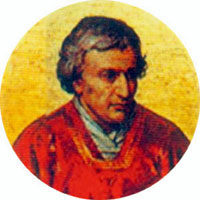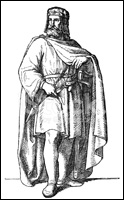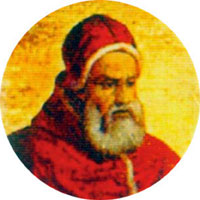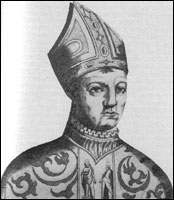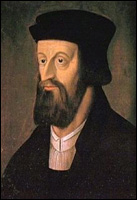In the Isle of Patmos, Saint John saw a vision of 7 Congregations, which foretold the history of Christianity until the end of time. The period of time we are now entering is called Thyatira, when Jezebel was riding the Beast, and the Papacy was a veritable sewer of corruption:
Nevertheless I have a few things against you, because you allow that woman Jezebel, who calls herself a prophetess, to teach and seduce my servants to commit fornication, and to eat things sacrificed to idols (Apocalypse 2:20).
As the successor of the Messiah, Saint John had a thorough knowledge of the Old Covenant, and the confrontation between Elijah the Prophet and the deadly Queen Jezebel
( I Kings 19:2).
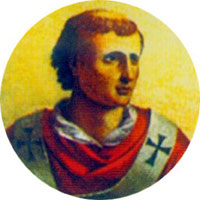 Pope John X. Pope from 914 to 928. |
|
 Pope Sergius III Pope from 904 to 911. |
The young Pope John was originally archbishop of Ravenna before Theodora recalled him to Roma and made him Pope. She wanted to be close to her son. Another mistress of Pope Sergius named Marozia wanted her son in that position, so she had him smothered to death with a pillow.
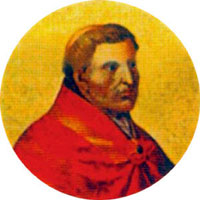 Pope John XI. Pope from 931 to 935. |
|
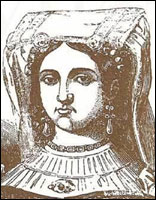 The infamous courtesan Marozia (890–937). |
The 5-year-reign of Pope John XI was considered a long reign during the 10th century when the life span of most ponfiffs was very short indeed.
|
|
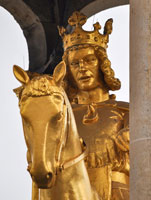 Fake Emperor Otto I (912–973). Reigned from 962 to 973. |
On February 12, 962, fake "Roman Emperor" Otto I and Pope John called a synod in Roma to finalize their relationship. The pontiff made it clear to him that even though he was called "Roman Emperor," his jurisdiction did not included the City of the 7 Hills.
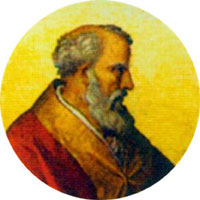 Pope John XIII Pope from 965 to 972. |
|
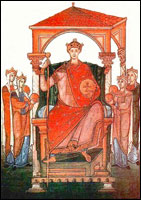 Fake Emperor Otto II (955–983). Reigned from 973 to 983. |
Fake Roman Emperor Otto II was made joint-ruler of Germany in 961, at an early age, and his father named him co-Emperor in 967 to secure his succession to the throne.
His father also arranged for Otto II to marry the Byzantine Princess Theophanu, who would be his wife until his death. When his father died after a 37-year reign, the 18-year-old Otto II became absolute ruler of the fake "Roman Empire."
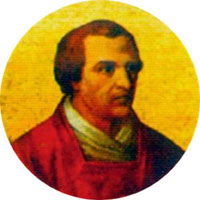 Pope John XIV. Pope from 983 to 984. |
|
 "Antipope" Boniface VII. "Antipope" Boniface VII. Pope from 984 to 985. |
The 10th century was a very, very dangerous time to be a Pope . . . or a fake "Roman Emperor." Any "Roman Emperor" who tried to rule in Roma was soon given the poison cup.
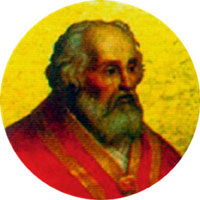 Pope John XV. Pope from 985 to 996. |
|
 Hugh Capet (939–996). Reigned from 987 to 996. |
The emergence of France as a great nation began with Hugh Capet. Even the French language was standardized about that time. That dynasty played a large role in the history of the Knights Templar and the Crusades.
The word anti, as in Antichrist, means a substitute or surrogate....In modern parlance it means IDENTITY THEFT. An Antipope was not an atheist who sought to abolish the Papacy, but a rivals of the then reigning Pope.
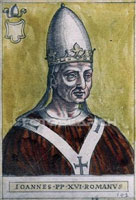 "Antipope" John XVI. Pope from 997 to 998. |
|
 Pope Gregory V. Pope from 996 to 999. |
As the year 1000 AD approached, Catholics were told that the world was about to end, and the best way to prepare for the Judgment Day was to be poor....Millions did sign over their property to the Church, and it was duly notarized by the Papal canon lawyers.
When nothing happened, they realized that they had made a colossus mistake . . . and many tried to retrieve their property . . . but it was too late!
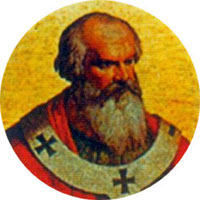 Pope John XVII. Pope from May to Sept 1003. |
|
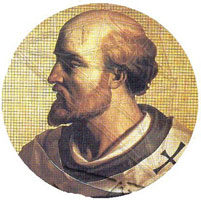 Millennium Pope Sylvester II Pope from 999 to 1003. |
That pontiff did not live long enough to enjoy the windfall that the Vatican received at the beginning of the new millennium.
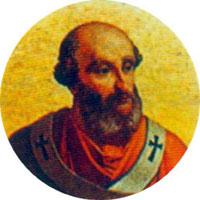 Pope John XVIII. Pope 1004 to 1009. |
|
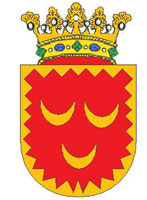 Coat of arms of the Crescenzi family. |
The 10th century was indeed the darkest of the Dark Ages, but incredibly, things actually got worse as the new century unfolded.
|
|
|
There was no Pope John XX because "Antipope" John XVI was recognized as a legitimate Pope for many years. When he was eliminated from the list of legitimate Popes, the numbering system changed.
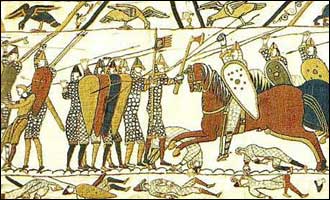 The so-called "Battle of Hastings" as depicted on the tapestry. |
|
 King Harold pulling an arrow out of his eye and then receiving a sword slash on his thigh. |
It is not an exaggeration to state that the Babylonian Captivity of Britannia was as revolutionary an event as the Constantinian Revolution of 313 AD.
|
|
|
When the first date of 1260 failed to bring about this Third Age, a new date of 1290 was proclaimed. This new date was measured from the time Christ began his public ministry at 30. When that didn't materialize, a third date of 1335 was proclaimed.
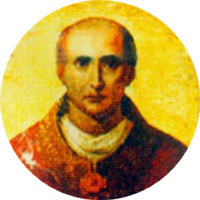 Pope John XXII (1244–1224). Pope from 1316 to 1334. |
|
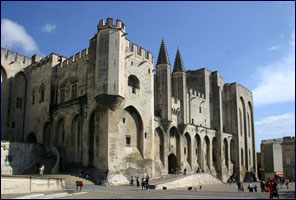 The massive Palace of the Popes at Avignon. |
Even after Pope Gregory XI was forced to return to Roma by Catherine of Sienna in 1377, the schism continued. Popes Clement VII and Benedict XIII continued to reign as pontiffs at Avignon.
|
|
|
Catholics backing the wrong Pope were also liable to be burned alive at the stake, as was the case of Joan of Arc in 1431.
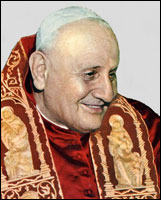 "Jovial" John XXIII. Pope from Oct. '58 to June '63. |
|
 The inauguration of John F. Kennedy, January 20, 1961. |
The conspirators in the Kennedy assassination prepared every detail with minutest care, but they also believed that President Kennedy having the name JOHN would make the coup d'état successful. Obviously, they were very, very wrong about that. Unfortunately, so many people had to die to cover-up their grave miscalculation.
Pope John XXIII was the last Pope named John in the nightmarish Papal dynasty! The best way to rescue Catholics . . . and Muslims . . . from the Babylonian system is to present the true history of the Papal dynasty:
Flee out of the midst of Babylon, and deliver every man his soul: be not cut off in her iniquity, for it is the time of JEHOVAH's vengeance; he will render unto her a recompense (Jeremiah 51:6).
And I heard another voice from heaven saying, "Come out of her, my people, that ye be not partakers of her sins, and that ye receive not of her plagues" (Apocalypse 18:4).
Vital links
References
Luther, Saint Martin. Table Talk. William Du-gard, London, 1652.
Norwich, John Julius. Absolute Monarchs: A History of the Papacy. Random House, New York, 2011.
Rappaport, Angelo S. The Love Affairs of the Vatican. Barnes & Nobles Books, New York, 1995. (Originally published in 1912).
Woodrow, Ralph. Babylon Mystery Religion Ancient and Modern. Ralph Woodrow Evangelistic Association. Riverside, CA., 1966.

